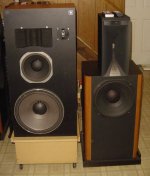For attempting to impose reality on this thread, Earl, you are awarded spoilsport!
Where is the progress and where would the world have developed if everyone would only copy the existing or the supposedly best?
For attempting to impose reality on this thread, Earl, you are awarded spoilsport!
Tnargs, reality about what?
I'm serious i don't get your point. Camplo's quest is different from what most think or want, in what it is an issue?
As already pointed there is some potential issue in the choice he made but he expressed many times these are not things which might bother him.
So what?
Each one his own. And it is always interesting to see different projects than the ubiquitous 2 way with 6'5"+1". Even if it doesn't rock your boat or doesn't fit your preferences.
Have you experience with studio works Tnargs and the specific needs it brings? If yes please share your experience and impression and tell us in what you think it may compromise Camplo's work.
There is so much forces at works which tends to make us focus on our differences, tear us apart.
I find this sad. We should rather point the opposite, what we have in common, what we share and focus on that in my view. But i know i'am an utopist or a dreamer...
Tnargs being constructive is nice ( criticism is constructive ) being a naysayers not so. Border between the two state is thin.
Maybe because it is the best way to do it!?😕
Where is the progress and where would the world have developed if everyone would only copy the existing or the supposedly best?
Both statements are valid but no needs to remind it to you as you both are PhD.
Both of you have accomplished a tremendous work and both of you deserve respect for that.
Please keep being a source of inspiration !
Ro808 thank pointing the Rca lc9.
Like Plasnu i didn't know of its existence neither the whole history of the biradial design.
About ( big) studio owners being ego driven, well this is very common.
From what i've seen in this field being succesfull have another side to the coin: most of the better engineers i've seen had terrible personal life and this have to be compensated for.
This sometimes lead to not very humble presentation of themselves in the succesfull field of interest.
Happily there is exception to that.
Anyway the article point to some interesting things about the industry of big recording studios.
Like Plasnu i didn't know of its existence neither the whole history of the biradial design.
About ( big) studio owners being ego driven, well this is very common.
From what i've seen in this field being succesfull have another side to the coin: most of the better engineers i've seen had terrible personal life and this have to be compensated for.
This sometimes lead to not very humble presentation of themselves in the succesfull field of interest.
Happily there is exception to that.
Anyway the article point to some interesting things about the industry of big recording studios.
Last edited:
The radial type of horns are very interesting! I have incorporated an offset in my program to show the different profile transitions:
View attachment 802152
When fins are existent then the vertical profile begins to expand faster exactly at the end of the fins. The sum of the cross sectional area of all sections between the fins and the walls should give the desired surface expansion. At the end of the fins an only conical expansion would result. Therefore, the vertical profile expands from here. Leaving the fins changes the game considerably and the first flat vertical conical section looks more like a slot waveguide in order to form the wave front and not like a horn.
This example may not give proper results because of missing fins.
View attachment 802153
Docali,
From your message i understand the section between each fins could be seen as cells which form a kind of multicell horn nested into a biradial profile.
Does it makes sense to consider TH as a breed bewteen a regular biradial and a multicell horn?
If it makes sense at which frequency the 'cells' are working?
That's true, often dogmatic statements of preference can have that effect. What the majority of us have in common is how our brains use the inputs from our senses to create an image of the world.There is so much forces at works which tends to make us focus on our differences, tear us apart.
I find this sad. We should rather point the opposite, what we have in common, what we share and focus on that in my view. But i know i'am an utopist or a dreamer...
So everything is a trade off? Why not talk about what is gained from a traditional long horn and what is to be sacrficed in order to gain constant directivity?
Why not talk about what is gained from a traditional long horn and what is to be sacrficed in order to gain constant directivity?
Hello camplo
That's an odd statement simply because CD horns can be quite long for narrow coverage. As far as a sacrifices that are lost by going CD I just don't see any. To me I would flip the question.
I have both a traditional exponential horn system in a pair of 4344 clones and CD in a pair or Array 1400 clones. The Arrays are much better balanced in the room have a huge sweet spot in comparison. The 4344's have a much smaller sweet spot and off axis you can clearly hear the upper octaves dropping out. If you do a stand up sit down test it's worse than off axis because you end up getting a flashlight beam you have to be in for the correct over all balance because of the very narrow vertical dispersion.
Rob 🙂
Attachments
Docali,
From your message i understand the section between each fins could be seen as cells which form a kind of multicell horn nested into a biradial profile.
Does it makes sense to consider TH as a breed bewteen a regular biradial and a multicell horn?
If it makes sense at which frequency the 'cells' are working?
If you look here:
https://www.diyaudio.com/forums/mul...m-spl-low-distortion-2-a-458.html#post5989643
It seems that the TH4001 loads the driver up to highest frequencies. This seem to be related to the the small slot diameter. The comparison to a multicell-horn seems obvious. What I intended to say, if you take the inner radial profile of the TH4001 and change nothing but leave the fins then the desired expansion formula is totally different as the fins are using space inside the construction.
drba_jmlc_150_hvdiff
This is a large horn. 🙂 To make the model size reasonable the mesh resolution has been reduced and the model is only good to about 5Khz or so.
It loads quite low and has a nice bias for the horizontal plane. Minor horizontal polar roughness is from the roundover mesh resolution. The vertical would need a larger roundover it more off-axis smoothness were needed.
Add - just noticed the horn name was wrong is the original graph title - fixed now.
This is a large horn. 🙂 To make the model size reasonable the mesh resolution has been reduced and the model is only good to about 5Khz or so.
It loads quite low and has a nice bias for the horizontal plane. Minor horizontal polar roughness is from the roundover mesh resolution. The vertical would need a larger roundover it more off-axis smoothness were needed.
Add - just noticed the horn name was wrong is the original graph title - fixed now.
Attachments
-
 drba_jmlc_150_hvdiff-3dview.jpg66.3 KB · Views: 370
drba_jmlc_150_hvdiff-3dview.jpg66.3 KB · Views: 370 -
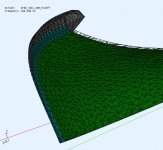 drba_jmlc_150_hvdiff-Xsection.jpg62.8 KB · Views: 367
drba_jmlc_150_hvdiff-Xsection.jpg62.8 KB · Views: 367 -
 drba_jmlc_150_hvdiff-VertPolarCurves.jpg41.3 KB · Views: 90
drba_jmlc_150_hvdiff-VertPolarCurves.jpg41.3 KB · Views: 90 -
 drba_jmlc_150_hvdiff-VertPolarCont.jpg25.1 KB · Views: 88
drba_jmlc_150_hvdiff-VertPolarCont.jpg25.1 KB · Views: 88 -
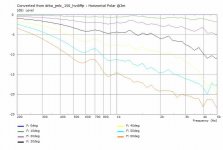 drba_jmlc_150_hvdiff-HorzPolarCurves.jpg38 KB · Views: 93
drba_jmlc_150_hvdiff-HorzPolarCurves.jpg38 KB · Views: 93 -
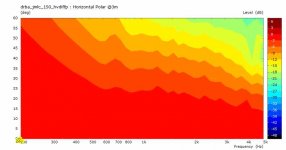 drba_jmlc_150_hvdiff-HorzPolarCont.jpg23.7 KB · Views: 310
drba_jmlc_150_hvdiff-HorzPolarCont.jpg23.7 KB · Views: 310 -
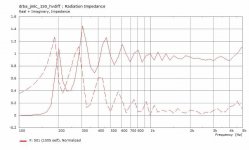 drba_jmlc_150_hvdiff-RadImp.jpg39.1 KB · Views: 348
drba_jmlc_150_hvdiff-RadImp.jpg39.1 KB · Views: 348
Last edited:
.. and the fields
Attachments
-
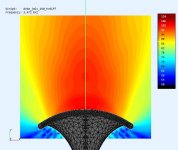 drba_jmlc_150_hvdiff-Hfield@3K5Hz.jpg37.7 KB · Views: 78
drba_jmlc_150_hvdiff-Hfield@3K5Hz.jpg37.7 KB · Views: 78 -
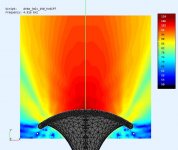 drba_jmlc_150_hvdiff-Hfield@4K9Hz.jpg38.9 KB · Views: 76
drba_jmlc_150_hvdiff-Hfield@4K9Hz.jpg38.9 KB · Views: 76 -
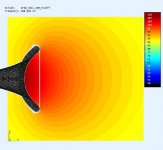 drba_jmlc_150_hvdiff-Vfield@200Hz.jpg32.1 KB · Views: 84
drba_jmlc_150_hvdiff-Vfield@200Hz.jpg32.1 KB · Views: 84 -
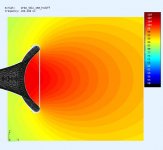 drba_jmlc_150_hvdiff-Vfield@500Hz.jpg32.2 KB · Views: 76
drba_jmlc_150_hvdiff-Vfield@500Hz.jpg32.2 KB · Views: 76 -
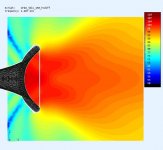 drba_jmlc_150_hvdiff-Vfield@1K5Hz.jpg35.6 KB · Views: 75
drba_jmlc_150_hvdiff-Vfield@1K5Hz.jpg35.6 KB · Views: 75 -
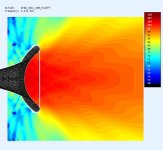 drba_jmlc_150_hvdiff-Vfield@3K5Hz.jpg37.8 KB · Views: 86
drba_jmlc_150_hvdiff-Vfield@3K5Hz.jpg37.8 KB · Views: 86 -
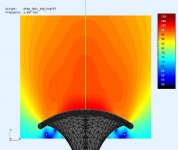 drba_jmlc_150_hvdiff-Hfield@1K5Hz.jpg36.1 KB · Views: 73
drba_jmlc_150_hvdiff-Hfield@1K5Hz.jpg36.1 KB · Views: 73 -
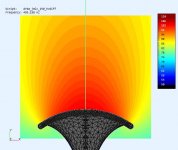 drba_jmlc_150_hvdiff-Hfield@500Hz.jpg35.3 KB · Views: 75
drba_jmlc_150_hvdiff-Hfield@500Hz.jpg35.3 KB · Views: 75 -
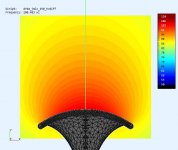 drba_jmlc_150_hvdiff-Hfield@200Hz.jpg34.6 KB · Views: 90
drba_jmlc_150_hvdiff-Hfield@200Hz.jpg34.6 KB · Views: 90 -
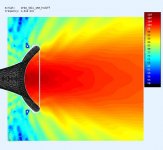 drba_jmlc_150_hvdiff-Vfield@4K9Hz.jpg39 KB · Views: 85
drba_jmlc_150_hvdiff-Vfield@4K9Hz.jpg39 KB · Views: 85
Hello camplo
That's an odd statement simply because CD horns can be quite long for narrow coverage. As far as a sacrifices that are lost by going CD I just don't see any. To me I would flip the question.
I have both a traditional exponential horn system in a pair of 4344 clones and CD in a pair or Array 1400 clones. The Arrays are much better balanced in the room have a huge sweet spot in comparison. The 4344's have a much smaller sweet spot and off axis you can clearly hear the upper octaves dropping out. If you do a stand up sit down test it's worse than off axis because you end up getting a flashlight beam you have to be in for the correct over all balance because of the very narrow vertical dispersion.
Rob 🙂
Agreed and the crux of the matter!
Thanks Don!
The horiziontals really look better now. Do you think that it is possible to create a better mesh showing less artefacts? What was the restriction - CPU / Memory?
The horiziontals really look better now. Do you think that it is possible to create a better mesh showing less artefacts? What was the restriction - CPU / Memory?
Where is the progress and where would the world have developed if everyone would only copy the existing or the supposedly best?
This is also referred to as - Nirvana.
//
This is also referred to as - Nirvana.
//
Not really as you have obviously missed the word "supposedly". 😉
Thanks Don!
The horiziontals really look better now. Do you think that it is possible to create a better mesh showing less artefacts? What was the restriction - CPU / Memory?
Yes, CPU time (15hrs) was the issue and not memory (11GB). I think I need a new PC or more steam 😀
I can refine it some more (V2?) and it will produce fewer artifacts at a cost of higher solve time. The model size is dominated (65%) by the mesh related to the mouth interface + round over. I don't think the overall polar shape will change, but it will definitely have less artifacts 🙂
Hello camplo
That's an odd statement simply because CD horns can be quite long for narrow coverage. As far as a sacrifices that are lost by going CD I just don't see any. To me I would flip the question.
I have both a traditional exponential horn system in a pair of 4344 clones and CD in a pair or Array 1400 clones. The Arrays are much better balanced in the room have a huge sweet spot in comparison. The 4344's have a much smaller sweet spot and off axis you can clearly hear the upper octaves dropping out. If you do a stand up sit down test it's worse than off axis because you end up getting a flashlight beam you have to be in for the correct over all balance because of the very narrow vertical dispersion.
Rob 🙂
How would you compare the beaming, to that of which a ribbon tweeter experiences?
that could mean so many different things..... The Arrays are much better balanced in the room
A driver has a certain polar....so when you use it, you know what to expect....so, did you not know what beaming was or meant before you purchased the beaming horns?If you do a stand up sit down test it's worse than off axis because you end up getting a flashlight beam
Last edited:
When it comes to polar width, a wide polar that creates more room energy, makes room acoustic treatment even more essential....A wide polar doesn't exactly create a bunch of reflections of identical tone, rather, depending on the materials in the room, the reflections of the room come back with different freq/spl ratios to add to the blur in the time domain.....I can see why removing this reflective energy, in the way a horn with a narrow polar does, is an advantage to the sound quality within the sweet spot. I can theorize, I should say 😉 Also, the transition between a traditional horn and CD horn can be blurry, but long story short....the traditional horns are long and spec'd to load, usually by the 1/4WL and looking at the autotech designs, a SEOS 30 horn that is 37cm long says minimal freq is 300hz and a 300hz Iwata thats 45cm long says minimal freq 450....other traditional horns sport even longer lengths for "minimum freq" because loading is an actual goal for traditional horns. Loading effects sound quality, more loading, less excursion, higher SQ. Sounds like a traditional horn has an advantage here especially if I'm am to make to 200hz XO. 300hz XO isnt a horrible compromise BUT if the length of the horn does not suggest that it can load reasonably low enough for the XO why would I even look at it? I wouldn't know where to begin with the design but the length on all the SEOS horns all completely lacking for proper loading.....So basically you guys saying fck loading....am I right? If thats the case then any SEOS horn will do as long as the exit size is right, its not going to load anyway....
Last edited:
Yes, CPU time (15hrs) was the issue and not memory (11GB). I think I need a new PC or more steam 😀
I can refine it some more (V2?) and it will produce fewer artifacts at a cost of higher solve time. The model size is dominated (65%) by the mesh related to the mouth interface + round over. I don't think the overall polar shape will change, but it will definitely have less artifacts 🙂
😱
I can theorize, I should say 😉 Also, the transition between a traditional horn and CD horn can be blurry, but long story short....the traditional horns are long and spec'd to load, usually by the 1/4WL and looking at the autotech designs, a SEOS 30 horn that is 37cm long says minimal freq is 300hz and a 300hz Iwata thats 45cm long says minimal freq 450....other traditional horns sport even longer lengths for "minimum freq" because loading is an actual goal for traditional horns. Loading effects sound quality, more loading, less excursion, higher SQ. Sounds like a traditional horn has an advantage here especially if I'm am to make to 200hz XO. 300hz XO isnt a horrible compromise BUT if the length of the horn does not suggest that it can load reasonably low enough for the XO why would I even look at it? I wouldn't know where to begin with the design but the length on all the SEOS horns all completely lacking for proper loading.....So basically you guys saying fck loading....am I right? If thats the case then any SEOS horn will do as long as the exit size is right, its not going to load anyway....
Your idea of loading is wrong and I have heard this mention enough times that it needs to be corrected. Loading "cutoff" has little to do with length (see below for the caveat.) If it did then all infinitely long horns would load the same - to DC, but they don't.
"Loading" refers to the real part of the radiation impedance seen by the diaphragm. The acoustic power radiated depends on this resistance value. ALL horns/waveguides load exactly the same at HFs and at the very lowest frequencies. When normalized to the throat area all devices reach a value of 1.0 at HFs (mid frequencies actually) - with exactly the same loading. And they all load exactly the same at 0 Hz, namely 0. Hence there is a band, and it's actually fairly small where horns/waveguides differ in loading and the middle of this band is called "cutoff". Near cutoff is the only place where any horn differs from any other and this difference in dB is only about 2-3 dB at best.
This idea of loading being critical is not really valid. The fact that loading means lower cone excursion is true in detail, but insignificant in practice. I run my CDs well below "cutoff", excursion in a CD is never an issue in a home setting as we never come close to mechanical limits except maybe at the extremes, like a 200 Hz crossover. But even at these extremes loading is not going to save you from mechanical problems by changing the horn characteristics. As far as loading goes they are all pretty much the same. The CD needs to handle the excursion plain and simple and no horn is really going to change that.
Finally, there is no validity to thinking that lower cone excursion means better sound quality. It's just not that simple. Nonlinear effects tend to be inaudible until they are obvious. Its like clipping in an amp. As long as you are not clipping everything is fine. amps can have problems at very low signal levels, but speakers don't do that.
Now there are some caveats. If there is substantial reflection from the mouth, then the resonance within the horn will causes peaks and dips in the radiation resistance. Locating one of these peaks at cutoff will boost the radiation impedance (followed of course by a large dip.) Hence these horn length resonances can change the cutoff, but in a very bad way - with resonances. Resonant horns sound bad, although some may like the "full body" that they exhibit, but it is not "good sound quality". For good sound quality we must get rid of the mouth reflections and then we are back to the fact that the horns loading really isn't of much significance. And certainly not related to length.
Last edited:
Hello Camplo
Similar but not sure where you are going as I was comparing CD vs Non CD horns and systems not different driver types.
Well in this case it is due to CD vs Non CD as frequency response and bandwidth are essentially identical. Main differences are system polar responses.
I knew exactly what they were before I built both speaker systems. They are essentially technological and design snap shots in time spanning 40 years . One from the early 70’s using traditional horn/ring radiator with non CD system design characteristics and the other from 2009 or so designed as a CD system using CD horns.
Rob🙂
How would you compare the beaming, to that of which a ribbon tweeter experiences?
Similar but not sure where you are going as I was comparing CD vs Non CD horns and systems not different driver types.
that could mean so many different things....
Well in this case it is due to CD vs Non CD as frequency response and bandwidth are essentially identical. Main differences are system polar responses.
A driver has a certain polar....so when you use it, you know what to expect....so, did you not know what beaming was or meant before you purchased the beaming horns?
I knew exactly what they were before I built both speaker systems. They are essentially technological and design snap shots in time spanning 40 years . One from the early 70’s using traditional horn/ring radiator with non CD system design characteristics and the other from 2009 or so designed as a CD system using CD horns.
Rob🙂
- Home
- Loudspeakers
- Multi-Way
- Is it possible to cover the whole spectrum, high SPL, low distortion with a 2-way?
